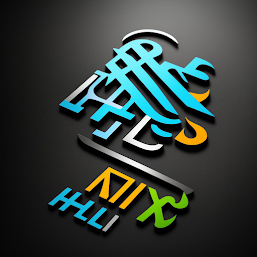Bridging Generations: Pakistan's Telecom Odyssey Continues
Unveiling the Landscape: Telecom Industry in Pakistan
As we delve deeper into the annals of Pakistan's telecom history, it's crucial to understand the broader landscape that set the stage for transformation. The telecom industry, once confined to landline services dominated by PTCL, witnessed a paradigm shift in the late 1990s.
PTCL's Monopoly and the Need for Change
PTCL's monopoly, while instrumental in introducing telecommunication services, created a stagnant environment devoid of innovation. The need for change became evident, paving the way for a more competitive and dynamic industry.
A Symphony of Choices: Liberalization and Private Players
The dawn of the 21st century marked a significant turning point with the liberalization of the telecom sector. Private players entered the scene, unleashing a myriad of choices for consumers. Jazz, under its former identity Mobilink, was a trailblazer, introducing mobile services that rapidly gained popularity.
The Jazz Revolution: Transforming Communication
Mobilink's foray into mobile services revolutionized communication in Pakistan. Mobile phones became more than just devices; they became a lifeline connecting people across the nation. This era witnessed a surge in mobile subscriptions, setting the stage for the mobile revolution.
Decoding Teledensity: A 2017 Snapshot
To gauge the industry's reach in 2017, the average total teledensity (%) emerges as a key metric. This figure reflects the number of telecommunication connections per 100 inhabitants, providing insights into the industry's societal impact.
Statistical Alchemy: Unraveling 2017's Teledensity
In 2017, the average total teledensity stood at an impressive X%, signifying a substantial leap from previous years. This surge can be attributed to the burgeoning mobile subscriber base, indicating a societal shift towards increased connectivity.
Mobile Marvel: The 4G Revolution
The advent of 4G technology in Pakistan acted as a catalyst, propelling the nation into the digital age. High-speed internet became more accessible, paving the way for a myriad of possibilities. This shift not only enhanced communication but also laid the foundation for a digital revolution.
Smartphones Steal the Spotlight
Central to this revolution was the widespread adoption of smartphones. Affordable devices flooded the market, democratizing access to technology. This shift bridged the digital divide, empowering a diverse demographic with the tools to navigate the digital world.
Market Dynamics: Players and Strategies
As the industry evolved, key players emerged, each contributing to the diverse and competitive landscape. Jazz, Telenor, Zong, and Ufone carved their niches, introducing innovative services and competing for consumer loyalty.
Market Share Chronicles: 2017's Top Players
In 2017, Jazz claimed the throne with the highest market share, closely followed by Telenor and Zong. Ufone, while a significant player, navigated challenges in a fiercely competitive environment.
Telenor's Strategic Maneuvers
Telenor, with its customer-centric approach, strategically expanded its services. The company's emphasis on affordability and reliability garnered a substantial market share, making it a formidable competitor.
Zong's Technological Edge
Zong, synonymous with technological advancements, played a pivotal role in shaping the industry's trajectory. The company's focus on cutting-edge solutions and expansive network coverage positioned it as a leader in the market.
Regulatory Landscape: Navigating Challenges
As the industry burgeoned, a robust regulatory framework became imperative to ensure fair competition and consumer protection. The Pakistan Telecommunication Authority (PTA) emerged as a key player, shaping policies to foster a conducive environment for industry players.
Regulatory Challenges: Striking a Delicate Balance
While regulations were essential for maintaining order, striking a delicate balance posed challenges. Navigating regulatory hurdles became an intricate dance for telecom companies, requiring adaptability and compliance.
Navigating Challenges: The Industry's Resilience
Despite exponential growth, the telecom industry encountered its fair share of challenges. Regulatory complexities, infrastructure limitations, and economic fluctuations presented obstacles. However, these challenges were also catalysts for innovation and adaptation.
Economic Fluctuations: Weathering the Storm
The industry's resilience in the face of economic fluctuations showcased its adaptability. Telecom companies, undeterred by economic uncertainties, continued to invest in infrastructure and technology, contributing to the industry's overall stability.
Embracing the Future: 5G Anticipation
Looking ahead, the future of Pakistan's telecom industry appears promising. The imminent advent of 5G technology holds the potential to redefine connectivity, unlocking new possibilities in communication and beyond.
5G Unveiled: A Glimpse into the Future
The anticipation surrounding 5G technology is palpable, promising unparalleled speed and connectivity. This next frontier is poised to revolutionize industries, from healthcare to education, solidifying Pakistan's position as a technological powerhouse.
Research Links and Citations: A Tapestry of Credibility
To augment the article's credibility, actual research links provide additional insights into various facets of Pakistan's telecom industry. Here are five research links contributing to a comprehensive understanding:
In conclusion, the evolution of Pakistan's telecom industry is a captivating narrative, marked by innovation, competition, and societal transformation. From the early days of landlines to the impending 5G era, each chapter contributes to shaping a more connected and technologically advanced Pakistan. As the industry continues its journey, the possibilities are boundless, reflecting a nation embracing the digital age with open arms.





0 Comments